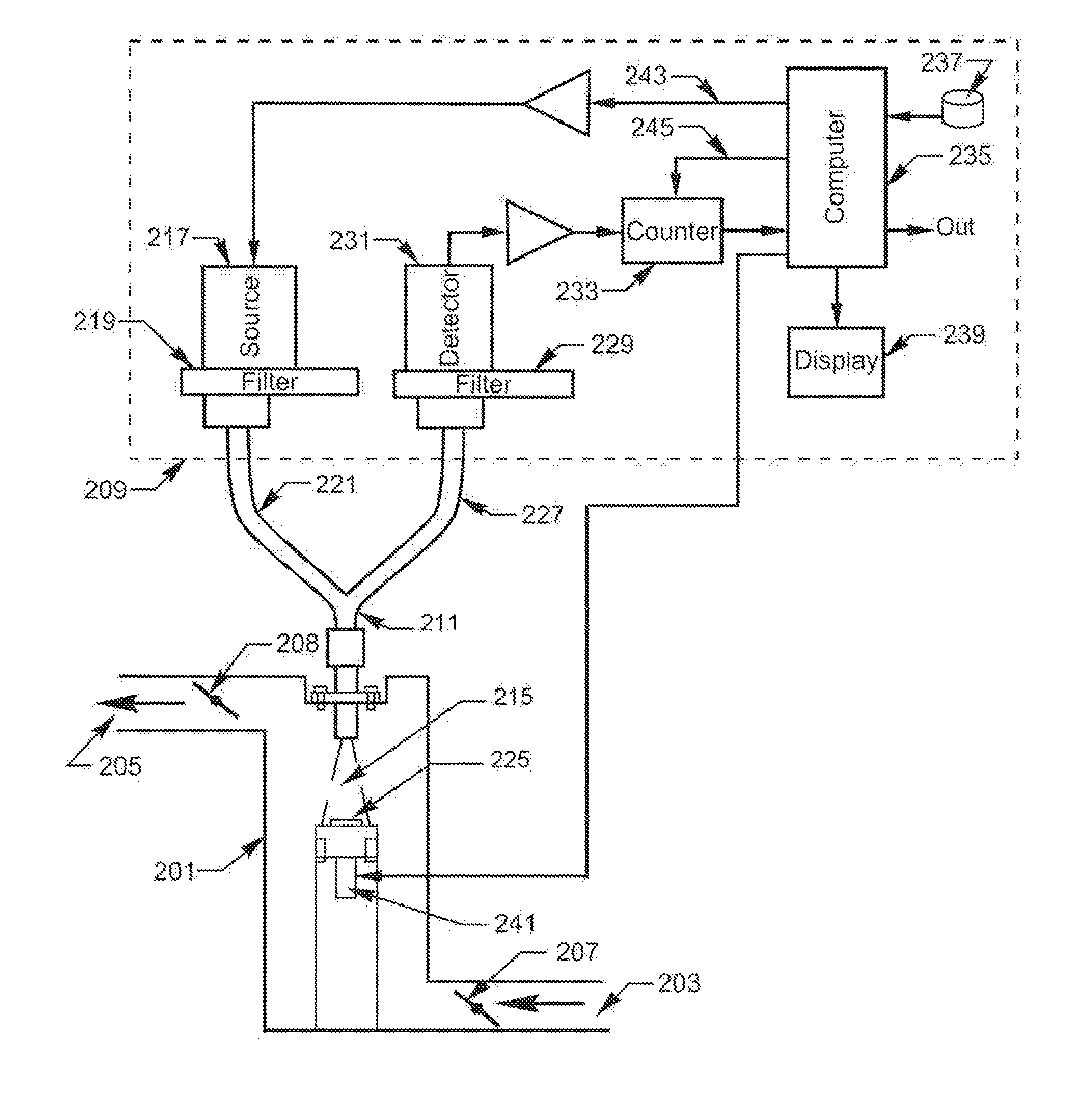Method and Apparatus for the Optical Determination of Total Organic Carbon in Aqueous Streams
a technology of optical determination and total organic carbon, which is applied in the direction of optical radiation measurement, photometry using electric radiation detectors, instruments, etc., can solve the problems of high maintenance and calibration requirements of toc analyzers, high cost, and extensive use of environmentally unfriendly and expensive chemicals, etc., to achieve high fluorescent effect and large volume of water
- Summary
- Abstract
- Description
- Claims
- Application Information
AI Technical Summary
Benefits of technology
Problems solved by technology
Method used
Image
Examples
Embodiment Construction
[0023]As stated above, current techniques for determining Total Organic Carbon (TOC) have the disadvantages of particles disposed in an aqueous sample scattering the illumination probe (typically an illumination at 254 nm) and of the strong absorption of complex carbon ring compounds at 254 nm negating a simple mathematical relationship between a measured absorption value and a TOC value.
[0024]It is readily observable from the absorption coefficient curve of FIG. 1 that the absorption of electromagnetic energy by the H—O bonds of water climbs steeply with wavelengths less than 200 nm. The transparency of water diminishes quickly and wavelengths less than 200 nm have generally been avoided by previous TOC-related measurements at least because of this steep slope. However, it has been found that electromagnetic energy in the region between 180 nm and 200 nm of the deep UV spectrum vibrates C—H and C—O bonds, making this region a viable region for absorption measurements useful for TOC...
PUM
| Property | Measurement | Unit |
|---|---|---|
| wavelength | aaaaa | aaaaa |
| wavelength | aaaaa | aaaaa |
| wavelength | aaaaa | aaaaa |
Abstract
Description
Claims
Application Information
 Login to View More
Login to View More - R&D
- Intellectual Property
- Life Sciences
- Materials
- Tech Scout
- Unparalleled Data Quality
- Higher Quality Content
- 60% Fewer Hallucinations
Browse by: Latest US Patents, China's latest patents, Technical Efficacy Thesaurus, Application Domain, Technology Topic, Popular Technical Reports.
© 2025 PatSnap. All rights reserved.Legal|Privacy policy|Modern Slavery Act Transparency Statement|Sitemap|About US| Contact US: help@patsnap.com



